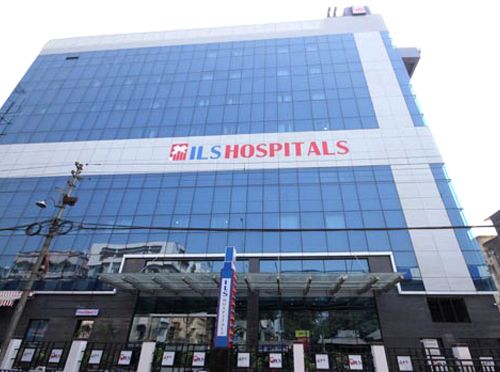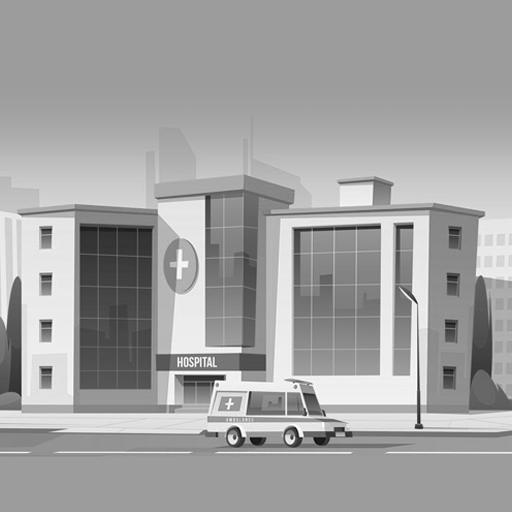5 Most Common Eye Surgical Procedure These Days
As H.G Wells, had rightly said, ”The beauty is in the eye of the beholder”
Indeed the eyes are the most important part of our body that enables us to unlock the beauty of nature. Most of us suffer from some or the other medical complications and discomfort related to vision that requires consultation and treatment from an expert eye specialist. Minor issues are often resolved with glasses, eye drops or mild medication. But, several of them need a surgical approach to resolve them for good or for better convenience.
Read more – 20 Fun Facts About the Human Eye
Here we present 5 most common eye surgery procedures that are prevalent.
1. LASIK and PRK Surgery
These are both surgical procedures to correct vision. Undergoing this surgery enables the individual to have good visuals even without their glasses and lenses. It uses the laser to reshape the cornea to correct vision, in case of the prior procedure and is somewhat similar in the later one as well. Both these procedures are done usually on an outpatient basis and are highly effective.
2. Cataract Surgery
Cataract is the natural cloudy formation over the lens that makes the vision blurry and dull. It is quite common in aged patient, but some young individuals are developing them these days as well. Cataract surgery is carried out by emulsifying the natural lens and replacing it with an artificial one. It is mostly an outpatient procedure.
3. Glaucoma Surgery
Glaucoma hampers vision significantly as it damages the optic nerve of the eye. It often leads to excessive build-up pressure in the eye and eventually towards blindness. There are two surgery procedures, laser, and conventional glaucoma surgery. Patients can resume their routine life in a matter of days.
4. Diabetic Retinopathy Surgery
It is prevalent among individuals who are suffering from diabetes and their fluctuating blood sugar is affecting their vision, by damaging blood cells of the eyes. It is often closely related to the formation of the floaters as well. Usually, a laser surgery is done to prevent swelling in the eye and promote new blood vessels in it.
5. Macular Degenerative Surgery
Macula of the eye enables focus on the details for the vision. It breaks down and hampers vision upon aging. The laser light is used to destroy unwanted blood cells and the surgery is often the outpatient type and might need to follow up procedures to address it more efficiently.
As we are observing World Sight Day, let’s pledge to take care of our vision. Any discomfort related to the vision must be addressed to a reliable eye specialist. Coincidentally, as we are also in between celebrating this puja festival, it would be incomplete to mention that goddess Durga has 3 eyes, but not we. So, let’s preserve both our eyes and vision.
Health Tips To Stay Healthy This Durga Puja Festive Season
Durga Puja – the festival that brings us closer to our family and friends. Amidst these overwhelming seasonal spirit, often we let our guards down and fall in tarps to several health complications. ILS Hospitals lists out some of the health issues related to festive-season and offers some tips and precautions to stay healthy.
1. As we are going through a confused climate, it is uncertain to say whether or not it will be raining in between Puja season. So, take every precaution you should during this time. Also, while pandal hopping, don’t forget to use the mosquito repellent.
2. Despite the prevailing monsoon, the intense sunlight, during the day with clear sky, can cause severe dehydration and sunburn if proper measures are not taken. So don’t forget to carry your umbrella during your day voyages and apply your sunscreen cream as well.
3. You should also be very particular about the food and drinks you feast upon outdoors, with your friends and family. Practice extra caution while going for the Fast food items like Noodles, Rolls and Pani Puri from street vendors.
4. Carrying and consuming bottled water is highly advised. Unpackaged water can be contaminated and thereby can lead to Diarrhoea, Typhoid, Food Poisoning, and Hepatitis.
5. Being in crowded places can cause spreading of several contagious illnesses such as cold, cough, flu and viral infections. Stay on guard while being with crowds in pandals and never-ending queue leading towards the same.
6. Pandal hopping for hours, regardless, of day or night is tiresome. Adequate rest is extremely necessary for you. So, even if you are extremely busy having fun, take out atleast 6 hours each day for sleep. Staying awake all night long is particularly not advised for elderly people and children.
7. Over excitement and enjoyment without caution can also lead towards mild to major injury. So keep a leash on the same and make health and safety your first priority.
8. If you already have any medical discomfort, you should be extra careful. For eg., if you have diabetes, you should keep taking your medicine without a miss and in case you have asthma and respiratory discomfort, it is best to plan your visit to avoid crowds as it might trigger an attack.
So, follow these simple precautionary tips and reap the best of this festive season. Also, take note that ILS Hospitals is all set and functional during the entire puja season. So come down at ILS Hospitals to address any medical emergency or discomfort that you encounter.
10 Facts About Breast Cancer Every Women Should Know About!
Cancer, in general, is a critical illness, but breast cancer is one very common type that claims many lives all over the world. World Health Organization identifies breast cancer as the most prevalent type of cancer among women and a leading cause of death among them. Gynaecologists advise every adult woman to have some knowledge about breast cancer in brief as it often comes handy to seek timely treatment.
Here we present a few facts about breast cancer
1. Aging is a prime risk factor of breast cancer. Though many younger women are being diagnosed with breast cancer, it is mostly found in women aging more than 55.
2. Though women have an exceptionally high risk of breast cancer, more and more cases of male breast cancer are surfacing in recent years.
3. One in every 8 women is at risk of developing breast cancer, in their lifetime.
4. Women with first family (mother, daughter or sister), with a history of breast cancer, have a higher risk of the same. It is almost twice as compared to women without it.
5. However, surprisingly about 8 out of 10 breast cancer patients have no family history of the same.
6. Having denser breast tissue, with more fibrosis and glandular tissue is more likely to have breast cancer. A routine mammogram can identify it in time and thus annual screening is advised for women above 40 years.
7. Breastfeeding for a year or so reduces the risks of breast cancer and a few other gynaecological issues in the future.
8. Overweight and obese is a major risk factor for breast cancer. Proper adequate exercise can mitigate its risk for good.
9. A proper self-breast exam can also detect an abnormality in time, leading to timely treatment of the same.
10. Many breast cancer tumours onset in the underarm and armpits as well. A timely ultrasound scan can detect them on time.
Bonus Fact-
Eating healthy and quitting smoking and alcohol can promote good health and mitigate the chances of breast cancer.
Every year, the month of October is observed as the breast cancer awareness month. During this festive season, when we bow down to the supreme female deity Durga, let us also acknowledge the empowering women, who work tirelessly for the family’s health and wellbeing. ILS Hospitals encourages every woman to avail Well Women Health Check-Up Package to address critical threats such as breast and uterus cancer along with other prevalent gynaecological discomforts.
Visit https://bit.ly/2y52uo3 to book your package now!
5 Festive Season Related Health Hazards and Possible Emergencies to Watch Out For This Durga Puja
This time of the year evokes a different spirit altogether, isn’t it? After all Durga Puja has its own significance in the heart and spirit of every Bengali and other people belonging to Bengal. Though it is celebrated in several parts of the world, its essence and aura is unmatchable in this particular region. Needless to say, visiting hospitals in between this festive time, is never in one’s wish list, but every year, many people make these unexpected visits to address their health issues.
Here we present several festival-related health hazards and emergency that might need you to seek medical help during this Durga Puja.
1. Food Poisoning

Eating out with friends during pandal hopping is enjoyed by every youth. This binge eating can eventually end up causing food poisoning and other digestion discomforts. Seek Gastroenterologist if the problems persist.
2. Respiratory Difficulty

While participating in traditional rituals during puja, Dhunuchi dance or cooking and organizing Puja foods preparations for hours, it is not uncommon to encounter breathing discomfort. Seek respiratory & Chest Medicine if difficulty persists. In fact, people with a history of asthma and other respiratory issues should keep a distance from such activities, to be on the safe side.
3. Accidental Injuries to Children

Pandal hopping with family has its own fun and consequences. Having infants and toddlers along can often cause mild to severe injuries to the little ones. First-aid can be done at the nearest medical clinic or by a skilled family member, but a consultation from a pediatrician or neonatologist is advised to rule out the possibility of long-term complications.
4. Accidents and Trauma to Adults

While clicking selfies, in crowded pandals or during Bisarjan, might be a common practice for many skilled youths, but accidents can happen anytime if one becomes unmindful. Unless it is mild cut, bruise, or scrapes, it is best to address the trauma from a skilled orthopedics and emergency unit.
5. Headache and Acoustic Trauma

Loud music and people chattering cannot be mitigated in the puja festival and in fact, is enjoyed by most. However, it might cause minor to mild trauma for sensitive individuals, particularly the elders, kids and recovering patients. Seeking help from ENT specialist is advised for experiencing severe discomfort.
In case, you or your loved ones fall in traps to any of the above-mentioned health complications, rush to your nearest ILS Hospital and seek medical care. We are open 24/7 for your treatment and care. Jot down the numbers in case any medical emergency strikes.
Dumdum: 033-40315000
Salt Lake: 033-40206500
Enjoy the festive season to its fullest. Happy Durga Puja
Adapt These 7 Healthy Habits to Keep Heart Disease at Bay
Heart ailments are one of the major causes of death all over the world. To address its importance, we observe the World Heart Day every 29th September. On this occasion, the Internet starts flooding with articles on various aspects of heart and cardiac emergencies and best heart hospitals. On behalf of the ILS Hospitals, we offer 5 effective tips regarding our very own pumping device, the heart.
Read more – 5 most common heart ailments explained by cardiologists in Kolkata
1. Say Goodbye To The Smoke
No matter if you smoke regularly or ‘only to deal with stress’, it causes plaque to build up in the arteries and can cause a heart attack in the future. Try to quit it this year itself for a better heart and overall health.

2. Attain A Healthy Body Weight
Do all you can to have a healthy body weight. A proportionate body ensures uniform blood circulation and mitigates the chances of having high blood pressure, up to a large extent. Moreover, the normal body weight will help you keep obesity-associated illness at bay, as a surplus.

3. Manage Your Stress
Let it be work related or family oriented, stress buildup is kind of inevitable in today’s world. Prolonged stress can cause high cholesterol and eventually towards an untimely cardiac emergency.

4. Eat And Live Healthy
Adapt a better diet and lifestyle to keep heart diseases away for good. Include lots of fresh veggies and fruits along with whole grains, low fat and lean proteins is a good start. Moreover, start exercising the at least 5 days in a week to keep the heart strong and healthy.

5. Avail Cardiac Screening
Almost every cardiac emergency have some symptoms that stay noticeable over a period of time. Addressing it at the right time can prevent many cardiac emergencies. On this World Heart Day, avail ‘Cardiac Care health check-up package’ at a discounted rate from all the units of ILS Salt Lake, ILS Dum Dum and ILS Agartala. It will help you detect underlying cardiac ailments if any.


So, adapt as many of them as you can, to have a healthy heart and an overall healthy living ahead.
In case, you are already experiencing some cardiac discomfort and assuming it is best to accept it as the natural aspect of life, take a break, cause most cardiac emergencies are preventable. Always remember, the golden words said by Jennie Garth rightly said, “It’s never too late to take your heart health seriously and make it a priority.”
Preserve Your Beautiful Smile With These Healthy Oral Habits
“Life Is Short, Smile While You Still Have Teeth”

On this September 12th, we are observing the World Oral Health Day. On behalf of the eminent dentists of ILS Hospitals, we bring you some useful tips to preserve that beautiful smile of yours. So, take down the notes and follows them like a regime to avoid untimely visits to seek teeth replacements.
1. Clean Your Entire Mouth, Not Just The Teeth.
Often people just settle with ‘twice a day’ brush mantra, but the oral health is comprised of the entire mouth. It includes teeth, tongue, gums, and roof of the mouth.

2. Hold the Right Brush In the Right Way
There are several types of brushes available in the market, it is crucial to pick the right brush as per age and special needs. It is also important to know the right technique to brush effectively. Holding the brush at an angle of 45 degrees to the gums and brushing both outward and inward, ensures the most effective cleaning.

3. Don’t Forget To Floss
Daily flossing can help to remove the residual food from the tricky corner of the mouth. Sadly, many people use hanging threads or other materials to floss, only when something stuck in-between teeth bothers them. It will cause more harm than good and is highly discouraged. Using a floss offered by a dental company is the safest.

4. Or To Use the Tongue Scraper
A brushing season is not complete without scraping the tongue clean. Apart from cleaning the bacteria from the tongue, it also helps to feel refresh.

5. Why Skipping The Mouthwash From The Regime?
Mouthwash is a new thing in the dental healthcare products. It acts as an extra layer of protection for teeth and gums. It also comes handy when one needs to have fresh breath in between a busy day.

6. Keep Your Diet ‘Teeth-Friendly’
Just like any other health aspect, dental health is also greatly affected by diet. Excessive consumption of soda, caffeine, sugar loaded food can cause enamel decay and other dental problems. Instead, eat fresh and crunchy, fruits and vegetables to nourish the gums and teeth. Moreover, midnight munching should be avoided at all cost unless it is followed by another sitting of brushing.

7. And Keep Your Brush ‘Dirt Free’
Cleaning the brush routinely is also crucial and so is changing them after every 6 months. This ensures the brush is good enough to keep up the good work.

8. Visit The Dentist Routinely
Seeing a dentist at least twice a year is strongly recommended. It can help in recognizing many dental problems at its first stage itself, which undoubtedly makes its treatment much easier.

So, pick your brush and cheers to a better, healthier smile. Happy and healthy brushing to you!
Signs To Tell If Someone Is Thinking About Suicide
Is there someone you know exhibiting strange behavior recently? Is your hunch telling you something might go wrong? Don’t ignore these warning signs as these could be warning symptoms of suicide. Suicide is one of the leading causes of death all over the world. Thankfully, suicide is not an illness, and it is preventable with timely measures. Here we present a few tips suggested by psychiatrists to spot if someone is considering suicide.
Unpredictable mood – Periods of long-term sadness, severe mood swings, unexplainable rage or happiness is a very common symptom of severe mental depression and confusion, sometimes are closely associated with suicide. In such cases, the family should offer their support and encourage communication.
Change In Sleep Pattern – Due to a disturbed mind, it is often inevitable to have a disruptive sleeping pattern. It includes sleeping too much, or too little, sleeping multiple times in a day, and feeling lethargic even after adequate sleep.
Giving Away their possessions Or Money – Passing on their favorite possessions, or money that they still use or might need in the future is an alarming sign of suicidal tendency. The one receiving them or witnessing this, must consult and support the person immediately.
Bidding Goodbyes – Biding goodbyes either in person or through some nonverbal medium, in a way that appears they will never meet again is yet another alarming sign of suicidal tendency. The people involved in these farewells must make sure to keep an eye on them.
Withdrawing From Peers – If someone is suddenly withdrawing from their peers, who otherwise love to stay among people is a sign of severe depression. It should be noted by close friends and offer encouragement for a positive approach.
Dangerous Or Self-Harming Actions – Reckless driving, engaging in dangerous recreational activities like bungee jumping and other activities that demonstrate the person no longer value their life should raise red flags immediately. The person should be confronted soon and helped to seek counseling from a psychiatrist.
Experiencing a recent trauma such as loss of a loved one due to divorce, diagnosis of an illness, and several other factors such as unemployment, financial crisis etc. are often the triggering factor for suicide. Almost 9 out of 10 people who eventually kill themselves gives a verbal or behavioral warning beforehand. By recognizing these symptoms and taking actions, the same can be prevented.
Since 2003, every 10th September has been observed as the World Suicide Prevention Day. It aims to encourage people with suicidal tendencies to seek help from their families, and friends. One should recognize these warning signs and address the society with this issue as a whole. In case you find these symptoms in any friends, family, neighbors, friend, or colleague, don’t hesitate to ask about their thoughts and recommend counseling and help.
20 Fun Facts about the Human Eye That Will Amaze You
If only our eyes could take snapshots of everyday life, we could have amazing 574-megapixel resolution pictures. Often we don’t give a serious thought to our eyes unless our visions start deteriorating in some or the other way. In fact, it is not uncommon to find that people complaining about hazy vision in queues of diabetes clinics.
As we are observing the Eye Donation fortnight from August 25th Aug – 8th Sept, we present some fun facts about the Human eye.
1. The eye lens is photosensitive. Just like that of a camera’s, it adjusts the amount of light it requires for the ideal vision.
2. Just like the pulse, pupils can tell about a person’s excitement level. Both Wider and dilated pupil shows different emotions.
3. The eye becomes tired upon long exposure to electronic screen or even paper books.
4. Eyesight might be affected due to pregnancy hormones. Thankfully, it resolves on its own right after childbirth.
5. Brown eyes are the most common attributes among people in the world.

6. All the folks with blue eyes supposedly have a common ancestor.
7. Many people have eyes of two different colors. It might be due to an injury, disease or heredity.
8. The first signs of diabetes type 2 are often detected during an eye test. A consultation in a diabetes clinic is required to confirm it later.
9. It is impossible to sneeze with open eyes. It is all due to the nerve arrangement, that makes blinking, a reflex action.
10. Minor eye injury heals within 48 hours with little medical attention.
11. A retinal scan is a better way of identification as iris has 256 unique characters, it is 40 in case of a fingerprint.
12. The presence of two eyes ensures the accurate perception of vision. It enables estimation of the distance of objects.
13. The eyes shut closed as a reflex upon perceiving dangers. It is an automatic response to mitigate injury.
14. Tears are a response to both physical and emotional stimuli. It also protects the eyes from several infections.
15. On an average, the human eye blinks 17-20 times in a minute.

16. Due to the absence of gravity, it is impossible to cry in space. It will simply get collected in the eyeball and will cause eye irritation.
17. The cornea is the only body part devoid of any blood vessels. It facilitates the proper refractive index in the eyes.
18. The eyes have rod and cone cells. The rod cells enable adjustment of light while cones enable perceptions of colors.
19. Excessive exposure to the sun can cause damage to vision.
20. A baby can only perceive black and white colors at birth, along with few shades of grey.
On this eye donation fortnight, we encourage every healthy individual to consider eye donation indistinct future and primarily to take care of their eyes to enjoy the beauty of the earth around us.

Are You Having Gallstones? Know the Symptoms to be Sure
Do you experience episodes of abdominal pain from time to time? Are you also experiencing persistent digestive issues that won’t resolve with diet changes? Chances are high that you are suffering from gallstones. In case you are ruling out the possibility of the same, remember, most of the patients later going for gallbladder stone surgery admitted to experience no symptoms for a long period of time. Let’s discuss what gallstones are along with some of the warning signs of gallstones.
The gallbladder is a small organ located beneath the liver and it secretes digestive enzymes that facilitate digestion. It is called the bile. When it concentrates into hardened mass, it becomes what we call the gallstones. It can either occur as one large stone or several small ones. The size of the same ranges from sand granule to as big as a golf ball.
There are some ‘silent gallstones’ that have no symptoms associated with it and often does not require any treatment either. Check out for the following warnings of gallstones that indicates you might need to consider a gallbladder stone surgery later on.
-
A sharp pain for a brief period, which often is called an ‘attack’, is the most prominent symptoms of an underlying condition of gallstone.
-
These episodes can be separated by some period of times. It can range anywhere between days, weeks, months or even years.
-
Though the pain might onset unannounced at any time, it has often been found to onset after 30-40 minutes after consuming a highly processed junk food.
-
This pain usually starts very mild but slowly turns severe. It stays constant for some time, which can last anywhere between 1 to 6 hours.
-
The pain usually originates in the abdomen, which may later move to the right shoulder or back. It usually sets during late night and the sharp pain may even wake a person right away.
-
The digestion associated symptoms such as nausea, vomiting, bloating, indigestion, etc. are often seen in patients with gallstones.
-
Symptoms like jaundice, fever and persistent severe pain need to be addressed immediately as it might indicate a blocked duct due to the accumulation of gallstones.
Unfortunately, gallstones are often recurring in nature. Those with a history of the same is highly susceptible to have it again in the future. Thus, it is always recommended to seek consultation before and after a gallbladder stone surgery to take measures against it.
What Exactly Is Nutritious Food And How Crucial It Is For Health
“A healthy diet is a solution to many of our health-care problems. It’s the most important solution.” -John Mackey
If only one can consume the right food, the right amount at the right time, staying healthy will become a piece of cake. It is recommended by maternity hospitals to keep track of the baby’s food since the age of 6 months old itself. A nutritional food ensures ideal growth, mitigates several illnesses and promote health. As we are observing the National Nutrition Week from 1st to7th September, we present what ideal, balanced, and nutritious food should be.

A balanced diet consists of every nutrition, which comprises proteins, carbohydrates, fat, vitamins and minerals. Consuming the following food in the adequate amount often full fills the quota of a balanced diet.
- Whole Grains
- Fresh, Seasonal Fruits
- Fresh Vegetables
- Lentils And Pulses
- Sea Food
- Meat And Eggs
- Dairy Food
- Dry Fruits
To accommodate all the above-mentioned food, one simply needs to divide their food chart to 5 times meals, namely the breakfast, mid-day snack, lunch, evening snacks, and dinner.
The exact requirement of this calorie can be calculated by Reference Intakes ratio. This RI ratio is classified as per gender, age, and level of activeness etc. It is calculated in terms of kcal and often offers an ideal amount of nutrients required by an individual. Here we present the average nutritional requirement by an adult man and woman.

As it clearly indicates that, usually men need more calories than women. However, women need extra nutrition in several phases of their life, including their growing years, during pregnancy and while nursing and caring for her newborn. As per gynecologists, proper nutrition intake is crucial for to-be and new mother to have a healthy and nourished child.
A well-balanced diet is crucial for every individual. In fact, simply limiting the amount of junk food consumption can also contribute towards a healthier tomorrow. In case one is wondering how can they remove the entire genre of fast food in one go from their diet chart, well, it has to be done in small steps. Eventually substituting them.
As rightly said by one smart anonymous individual, follow this
“One simple rule- if it is coming from a plant, eat it and if it is being made in a plant, don’t.”
It will help you decide what should be on your platter.



















